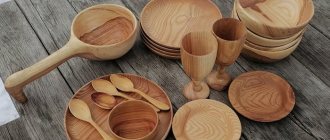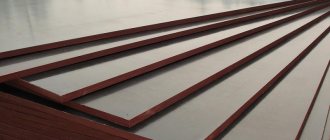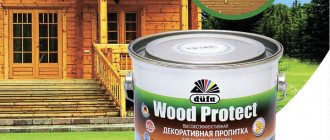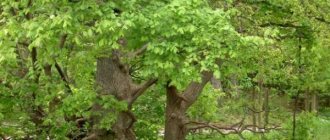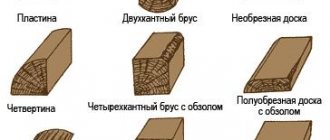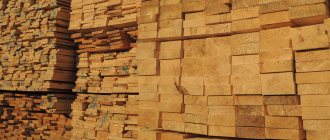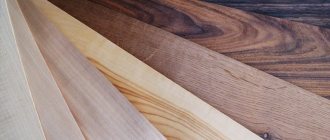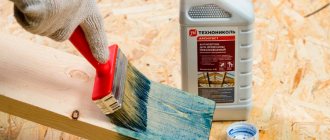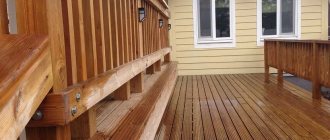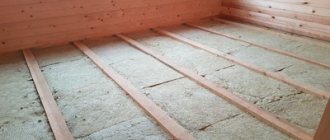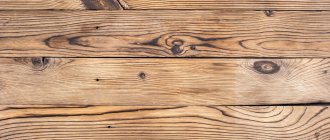To firmly connect wood products and wood-based materials - wood boards, hardboard, cardboard - wood glue is used. Protein plays the main role - it is what determines strong bonding. The connection is very strong. With the gradual destruction of the structure, it is clear that it is not the adhesive layer that is modified, but the adjacent layers of wood. This glue has a natural base and does not emit harmful substances, so its use is completely safe even in children's rooms.
Types of wood glue
Organic raw materials are used to make glue. Depending on their origin, the following types are distinguished:
- bone;
- fleshy;
- fishy
Bone wood glue is the most common. It is obtained from the bones and bone waste of animals. Pellets made from horns are especially prized. Bone glue contains gelatin, collagen and cysteine. All of them have excellent viscosity and allow you to firmly glue wooden products. Bone glue is usually sold in granular form.
Hide glue is made from waste from the leather industry. Basically, this is mezdra - a layer of subcutaneous tissue that is cut off when tanning hides. Leather scraps are also used. All of them contain oligopeptides with adhesive properties. Hide glue is available in the form of tiles, flakes, and powder.
Fish glue is prepared from fish scraps: bones, heads, scales, entrails, fins. This glue is considered the highest quality, so it is the most expensive. It is used in the restoration of antique products, as a basis for icon painting, and for other works that require the highest quality. Fish glue can be used to glue both homogeneous and dissimilar surfaces. It is produced in the form of granules or flakes.
The best manufacturers
An important selection criterion is the manufacturer. To understand which glue to use, you need to know the rating of the best today. These include:
- "Lakra" (Russia). It occupies a leading position in the field of paint and varnish production in our country.
- "Tex" (Russia). It produces adhesive mixtures for cardboard, plywood, and paper for both domestic and industrial needs.
- "Akfix" (Türkiye). Produces environmentally friendly paint and varnish products of high quality.
- "UHU" (Germany). Produces environmentally friendly compounds with high technical characteristics.
- "Kleiberit" (Germany). It produces adhesive compositions, which are mainly used in the production and repair of furniture.
- "Titebond" (USA). Offers consumers a wide range of excellent quality products.
- "Kiilto" (Finland). It produces only environmentally friendly wood glues that do not contain toxic substances.
- "Moment" (Russia). Engaged in the production of water-dispersion adhesives. The product has an affordable price and high technical characteristics.
The quality of products offered by these manufacturers meets world-class standards.
| Purpose | Names | Price |
| PVA BASED WOOD GLUE | KLEIBERIT 303.0 | 291 ₽ |
| ULTIMA JOINER PVA | 129 ₽ | |
| MOMENT SUPER PVA D3 MOISTURE RESISTANT | 490 ₽ | |
| TEX PVA JOINERY PROFESSIONAL | 149 ₽ | |
| KRASS PVA PVA D3 | 205 ₽ | |
| POLYURETHANE ADHESIVES FOR WOOD | TITEBOND POLYURETHANE WOOD GLUE 2300 | 385 ₽ |
| KLEIBERIT 501.0 | 477 ₽ | |
| SOUDAL 66A | 450 ₽ | |
| RESIN BASED JOINERY ADHESIVES | UHU PLUS ENDFEST 300 | 503 ₽ |
| TITEBOND ORIGINAL WOOD GLUE | 480 ₽ | |
| EDP EPOXY GLUE | 250 ₽ | |
| TITEBOND III ULIMATE 1416 | 590 ₽ |
PVA
PVA glue stands apart. It is completely synthetic. It is based on a substance called polyvinyl acetate. But PVA is safe, like its protein counterparts. It is even approved for use in educational institutions for children's creativity. PVA is also actively used for carpentry and construction work. It does an excellent job of joining wood products, cardboard, and wood boards.
Advantages of PVA glue:
- elasticity;
- moisture resistance;
- reliability of surface adhesion;
- transparency when drying;
- affordable price;
- Sold as a ready-to-use mass.
Cooking features
Wood glue is sold dry. Most often these are small yellow-brown granules. Sometimes you can find glue in tiles. Quality can be determined by appearance: the lighter and more transparent the granules, the better the glue.
Before using the glue, it is important to prepare it correctly. If you bought tiles, they need to be crushed. To do this, wrap it in cloth and break it with a hammer until it becomes crumbs.
We recommend: Types and features of heat-resistant glue
The preparation of glue is divided into two stages.
- Soak. Fill the granules or crumbs with cold water. It must first be boiled, since the salts contained in the “raw” water will negatively affect the quality of the finished mass. The liquid should completely cover all the granules. You need to soak the glue until it becomes soft and gelatinous. Soaking lasts from 4 to 12 hours, depending on the number of granules.
- Cooking. After swelling, the glue should be boiled for about 15 minutes in a water bath. Maintain temperature between 60 and 80 degrees. The result should be a homogeneous, lump-free liquid. Do not heat the mass over an open fire or bring it to a boil - the protein from which the granules are made will begin to deteriorate and the adhesive ability will decrease. When a thin film forms on the surface, the adhesive mass is ready.
Readiness for gluing can be checked in another way. Raise the stick used to stir the substance above the surface. If the liquid drips from it in separate drops, you need to cook more. If it flows in a continuous stream, the glue is ready.
There is a special device for cooking wood glue - a glue gun. It consists of two vessels of different sizes inserted into one another. Water is poured into a large container, and swollen wood glue is poured into a smaller container. Then the small vessel is placed inside the large one, and this, in turn, is placed on the fire. The best material for making glue is copper.
Advice
You can make your own oilcloth by taking two containers of different sizes. For example, a large tin can will serve as the outer vessel. And the inner one will be a small tin can attached to a wire.
"Moment Joiner"
Professional wood glue made in Russia. The composition is easily applied to wooden surfaces; if necessary, you can immediately begin processing with varnish or paint. It is supplied to the market in different containers - from 200 ml to 30 liters.
Characteristics of “Moment” wood glue:
- water resistance class D2;
- preservation of properties when heated to 70°C;
- bonding strength – above 8 N/mm²;
- gluing time – 15 minutes;
- normal consumption is 150 g/m².
Most often, Moment Joiner glue is used for gluing decorative elements, small parts, plastic and veneer. Complete drying of the joints occurs 2 hours after applying the composition to the surface.
How to improve the properties of glue?
To improve some properties, you can add some other substances at the preparation stage - the adhesive mass will become more versatile. It can be used to connect not only wooden, but also other surfaces.
- Drying oil. Add 10 g of linseed oil or natural drying oil to 40 g of granules. This will increase the moisture resistance of the adhesive joint.
- Glycerol. Add it at the rate of two teaspoons per liter of finished glue. Glycerin is added if the skin needs to be glued together.
- Wood ash, chalk powder. Sift one of the two powdery masses and add to the finished glue. The result is an excellent putty paste.
- Ammonia, borax, phenol. These additives are antiseptics and will protect the seam from mold.
Useful tips
Protein-based glue has its own characteristics. Those who use it for the first time do not always know them. Below are some tips to make using this material easier.
- To maintain the desired consistency, you need to add hot boiled water (if you want to make the mass more liquid) or increase the cooking time (if you want a thicker mass).
- The ideal operating temperature is from 30 to 70 degrees. In an oilcloth at an ambient temperature of about 25 C, the glue remains suitable for two hours. When the adhesive becomes too cold, it thickens and the adhesive properties are reduced.
- Ready-made wood glue cannot be stored. Therefore, you will have to soak and cook exactly as many granules as necessary for the current work. Already on the second day, the ability to bond becomes significantly lower. And after three days, mold is likely to appear. Since the basis is protein raw materials, rotting and decomposition, accompanied by a characteristic odor, is possible.
- The thickness of the adhesive layer should not exceed 0.2 mm.
We recommend: Types of glue for plywood and features of its use
There is also casein glue. It consists of kerosene, sodium fluoride, casein, copper sulfate and slaked lime. This type is rarely used because it is poorly stored and, when dried, significantly decreases in volume and changes color.
The right approach to mixing
Knowing how to dilute a ready-made mortar for laying tiles also includes the procedure for carrying out operations. The quality of the resulting solution depends on it, as well as how quickly the process will be completed. Let us describe the subtleties briefly.
- No need to add water to the solution. This creates a lot of lumps that are difficult to stir. The actions should be reverse. First, water is poured into the mixing container, then the solution is added little by little. This should be done by immediately stirring the mixture with a mixer. The amount of water is selected in the proportion recommended by the manufacturer.
- The method of diluting the adhesive mixture with the condition of adding dry powder to water, and not vice versa, has another advantage. Stirring not only happens faster, but also creates two layers of solution. The top one is denser, the consistency is assessed by it. The lower one is somewhat thinner, but it reaches its condition in the time it takes to produce a solution from the surface.
- All manufacturers of dry construction mixtures emphasize separately: the solution must be mixed again. This is necessary not only to break up the formed lumps, but also to restore consistency. The freshly mixed composition quickly sets, it is specially left for the time specified by the manufacturer (at least 5 minutes) and then processed again with a mixer. This restores consistency and allows the solution to retain its characteristics for 20-60 minutes.
- How much time and at what speed to stir can be estimated according to the requirements of the manufacturer of the adhesive mixture. Some specifically indicate that only manual breeding is allowed. As for time, it is worth remembering that the longer the mixer lasts, the thinner the solution turns out. Therefore, it is recommended to add the powder to water while kneading - this allows you to obtain a uniform composition, without dry areas or lumps.
Responsible manufacturers indicate the most detailed recipes. For example, on the packaging of compositions from the Ceresit brand, the water consumption per kilogram of dry mixture is indicated with an accuracy of 100 grams, the holding time before re-mixing is normalized, and also the number of minutes during which the position of the laid tiles can be adjusted.
When stirring the glue, do not rush. The consistency of the resulting solution should be accurately assessed. To do this, place a small amount on the trowel, after which the tool is tilted strongly. If the adhesive solution falls off in one piece, you need to increase the amount of water.
A dripping, sliding solution indicates that it is necessary to wait some time for partial setting, and prepare the next portion with less liquid. If the adhesive composition on the trowel holds firmly and has a uniform consistency, you can work with such a mixture with a guarantee of a good result.
As can be seen from the above, there is nothing complicated or magical about mixing high-quality tile adhesive. All you need to do is pay attention to detail and carefully follow the manufacturer's effective techniques and instructions.
When laying tiles, it is very important to dilute the glue correctly, otherwise problems will arise. Firstly, it is much more difficult to work with a liquid or too thick mass, and secondly, the quality of the masonry suffers
In addition, it is important to choose the appropriate composition for specific conditions.
The reliability of fixing the tiles directly depends on the correct preparation of the adhesive solution.
Terms of use
The procedure for working with wood glue is somewhat different from using its synthetic analogues (for example, PVA, which is also intended for gluing wood and cardboard).
- Prepare the adhesive mass according to the above algorithm. Monitor the temperature.
- Make sure that the parts to be glued are dry. The permissible humidity of wood products is no more than 10%. The maximum moisture content of veneer should not exceed 5%.
- Using a bristle or bast brush, apply the adhesive mixture evenly to both surfaces. The total thickness of the seam should be no more than 0.1–0.2 mm.
- Wait 2-5 minutes for the glue to dry slightly and cool. This way it will be squeezed out less when connecting parts.
- After connecting the two surfaces, lightly rub them together.
- Tie the glued parts tightly with twine or compress them with a clamp.
- You can use the glued item after six hours.
When gluing the ends, the glue can be applied in two layers. Be sure to let the first coat dry before reapplying.
Recommendations for use
The surfaces to be glued must be clean and grease-free.
Rules for using the glue are specified in the instructions. They must be followed with great precision. There are general recommendations that must be followed when working with any adhesive.
- The surfaces to be bonded must be clean. You need to remove not only dirt and dust, but also coating residues - varnish, paint, wax, oil. The latter is especially difficult, since the oil is absorbed into the top layer. Most often you have to degrease the surface to get rid of its residue.
- It is recommended to pre-assemble dry, without glue. This will ensure installation accuracy and economical consumption of adhesive.
- Not all parts can be simply connected to each other. A more reliable solution is a clamp. The parts are placed on top of each other and secured in a clamp while the glue dries - usually for a day. In this way, the strongest bonding is achieved.
How to choose wood glue?
When choosing wood glue, be guided by the following criteria.
- Color and transparency. The lighter and more transparent the granules or tiles, the better the adhesive.
- Type of glue. It directly depends on the type of work. The best and most expensive is fish. It is used for delicate and restoration work, where the highest demands are placed on quality. For ordinary repairs, bone or flesh repair is suitable.
The advantage of all of the above types of wood glue is their absolute safety. For construction needs, it is better to use bone, flesh glue or PVA. They provide strong bonding and are affordable. For delicate work and restoration, glue made from fish raw materials is ideal. And the above tips for preparation and use will help you quickly and effectively cope with the task.
Bonding technology
For strong bonding, it is necessary to create reliable pressure on the parts being glued. Various devices are used for this. Various clamps are commercially available, and some devices can be made independently. In the first case, two rigid plates and four bolts
. But for gluing large parts, four clamping bolts are not enough. In this case, the press can be replaced with a set of separate linear clamps.
As the size of the shield increases, the number of clamps must be increased. They must be placed at a distance of no more than 200-250 mm from each other. Choose bars 25-30 mm thick and 50-60 mm wide. Bolts should have a diameter of 8-10 mm and a length of 200 mm. The pressing edge of the bars must be made flat, then when they are tightened, the curved edge will straighten and create pressure along the entire length. It is better to clamp identical slabs together at the bottom. Then each of them serves as a kind of press for the other and provides uniform pressure
. The nuts on the bolts must be tightened alternately at both ends. It is better to stick the cladding only on one side of each frame, the one that comes into contact with the adjacent one.
The moisture content of the glued wood and wood materials should be 6-10%, maximum 14%, i.e. Only dry wood can be glued. The surfaces to be bonded must be flat and smooth (roughness up to 200 microns is allowed). This surface quality is ensured by processing with a plane
, grinding, planing on machines.
When gluing, it is enough to apply the glue to one of the surfaces to be glued. Apply glue with a brush. Duration of gluing, i.e. exposure of workpieces under pressure depends on the gluing method (hot or cold), the thickness of the workpieces and the temperature of the heater (for hot gluing), and the brand of glue.
When covering panels with sliced veneer, glue sometimes seeps through the thin veneer onto the front surface. The main reasons for this defect are liquid glue, high consumption, and high pressing pressure. Therefore, when performing facing work, it is necessary to strictly comply with the regulatory requirements for these parameters.
Another common defect when lining thin sheets or panels is their warping. It is especially large with one-sided cladding, i.e. when the law of symmetry is violated. Therefore, cladding of shields
always done on both sides. Single-sided cladding is permissible only for thin sheet materials (plywood, fiberboard), but on the condition that parts from them will be fixed in the product, such as, for example, the back walls of cabinet furniture.
After gluing parts, lining them, or assembling a product using glue, a technological holding period is required. Its duration is at least a day. The panel parts are kept on level ground in tight stacks, while the top panel is loaded. The assembled product is kept on the floor
. Technological exposure is necessary so that the glued parts cool, the adhesive joint gains strength and the internal stresses in the adhesive joints decrease. By holding parts in a clamped position, their shape is stabilized, and only in this way can subsequent warping be avoided.
